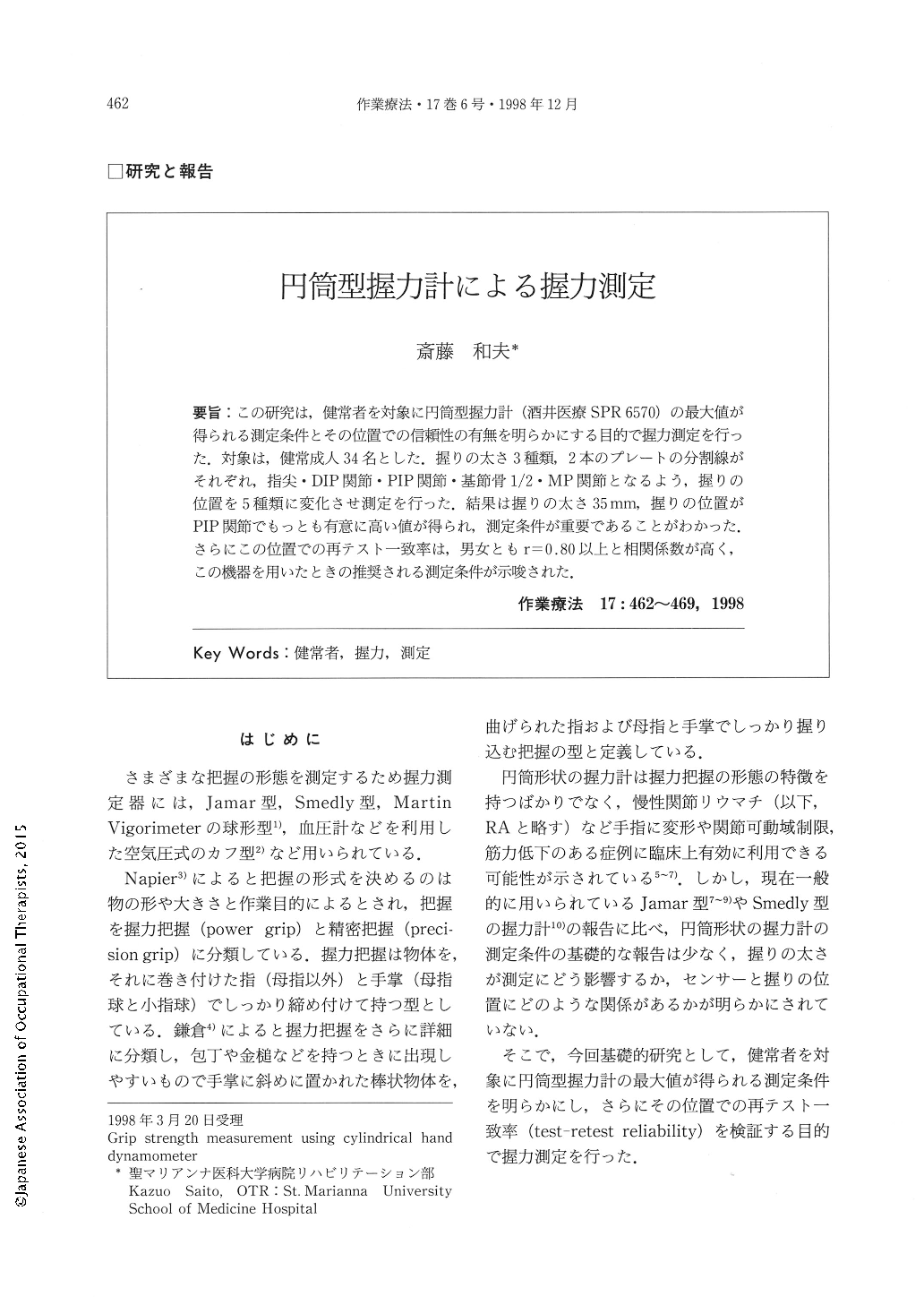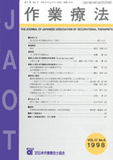Japanese
English
- 販売していません
- Abstract 文献概要
- 1ページ目 Look Inside
- 参考文献 Reference
- サイト内被引用 Cited by
要旨:この研究は,健常者を対象に円筒型握力計(酒井医療SPR6570)の最大値が得られる測定条件とその位置での信頼性の有無を明らかにする目的で握力測定を行った.対象は,健常成人34名とした.握りの太さ3種類,2本のプレートの分割線がそれぞれ,指尖・DIP関節・PIP関節・基節骨1/2・MP関節となるよう,握りの位置を5種類に変化させ測定を行った.結果は握りの太さ35mm,握りの位置がPIP関節でもっとも有意に高い値が得られ,測定条件が重要であることがわかった.さらにこの位置での再テスト一致率は,男女ともr=0.80以上と相関係数が高く,この機器を用いたときの推奨される測定条件が示唆された.
The purpose of this study was 1) to examine the test-retest reliability of the strength measurement using cylindrical hand dynamometer, and 2) to find a suitable condition at which maximal strength can be observed. Thirty-four healthy adults, 17 males and 17 females, participated in the study. Grip strength was measured at five different grip conditions according to the position of the grip sensor (tip, DIP, PIP, 1/2 of proximal phalanx, MP) and with three different diameters (25mm, 35mm, 45mm). The maximal strength was observed when the subject used 35mm of power grip at the "PIP" position. In addition, test-retest reliability was high in the previous setting (r=.92 for males and r=.80 for females). We found that grip diameter and grip position were significant factors affecting grip strength. Our results suggest a clinical standard method for measuring grip strength using cylindrical hand dynamometer.

Copyright © 1998, Japanese Association of Occupational Therapists. All rights reserved.


